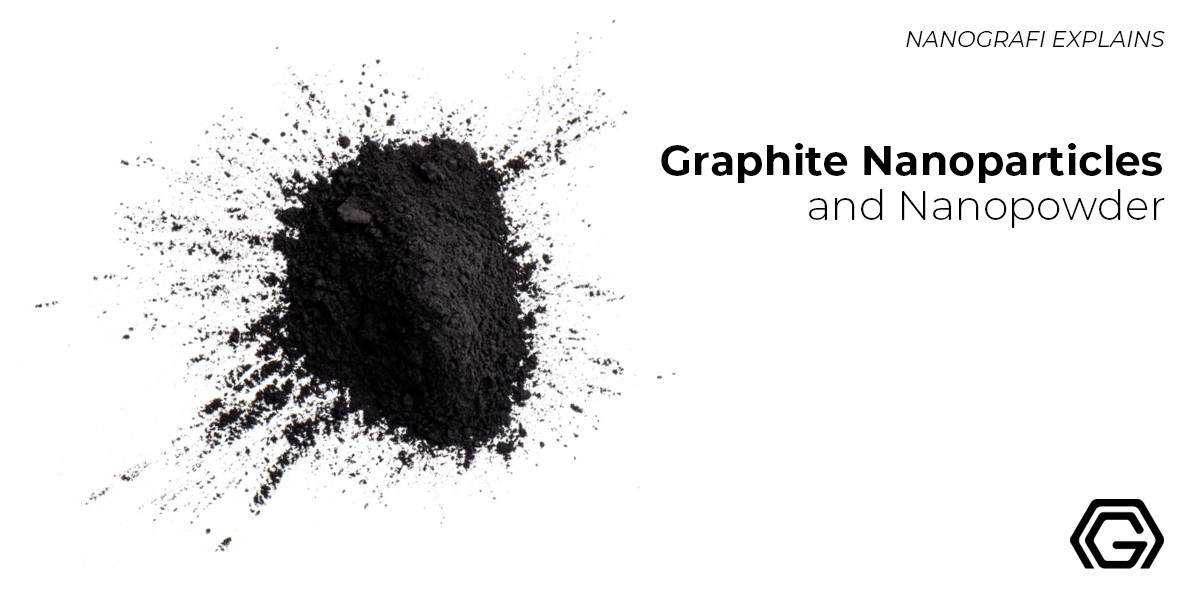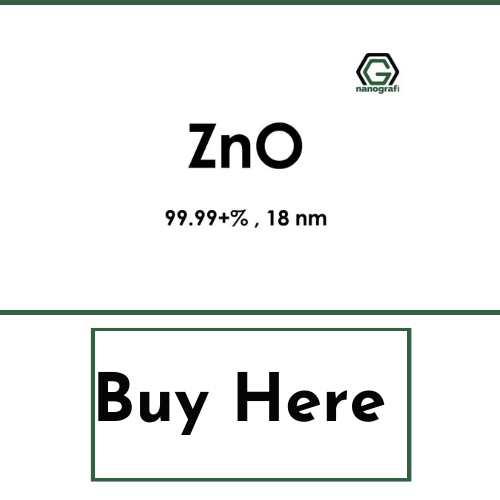Fundamental Properties and Applications of Zinc Oxide Nanoparticles
In the crust of the earth, the fifth most common element is the Zinc oxide. Comparatively, Zinc oxide is less toxic and inexpensive than other nanoparticles of metal oxide.
Nanoparticles of Zinc oxide have more biocompatibility than TiO2. Their diameter's less than 100 nanometers. Nanoparticles (Nanoparticles) of Zinc oxide (ZnO) are a perfect candidate for applications of research in biomedicine, seeing their antifungal, antibacterial, and anticancer activities that influence their capabilities.
Introduction
Nanoparticles of Zinc oxide can generate reactive oxygen species (ROS), and it's also capable of inducing apoptosis. As powders of nanometer size, zinc oxides aren't self-inflammable. The nanoparticles of Zinc Oxide are known to be 1 of the three nanomaterials that are mostly produced. The best fact about the zinc oxide nanoparticle is that their properties and features depend on their method of production.The characteristics and usages of Zinc oxide are discussed in detail below in the article.

Characteristics of Zinc Oxide
ZnO is the formula of an inorganic compound Zinc oxide. It is a whitish powder that isn't soluble in water. Various products and materials like rubbers, cosmetics, plastics, cement, ceramics, ointments, lubricants, adhesives, foods, first-aid tapes, and food supplements have ZnO as an additive in them. Naturally, zinc oxide occurs as the 'zincite' mineral, while most ZnO is synthetically produced. Zinc oxide nanoparticles have less than 100 nanometers of diameter. As compared to their high activity as a catalyst and size, Zinc oxide nanoparticles have a large enough surface area. The way they are synthesized modulates the exact chemical and physical properties of nanoparticles of Zinc Oxide.
For numerous applications in biomedicine, Nanotechnology is the best suitable technique for the last few decades. Nanoparticles of ZnO has remarkable ultraviolet (UV)-absorbing characteristics and visible light transparency, turning these Nanoparticles into remarkable sunscreen agents. On a daily basis, Zinc oxide is exposed to humans, and it originates from numerous sources, for example, cosmetics, intake of food, and many other products. In the crust of the earth, zinc is an important and 5th common element, and in high concentration, zinc is dangerous to humans. Inside the body, ZnO dissolves only one time. To prevent the deficiency of zinc in humans, a form of zinc, Zinc acetate (E650) is added into foodstuffs. ZnO is less toxic, less expensive, and more biocompatible than Nanoparticles of other metal oxides. They are shown to have high photocatalytic activity.
Nanoparticles of ZnO are 1 of the three nanomaterials that are produced in most range, along with silicon dioxide and titanium dioxide nanoparticles. Unlike powders of the size of nanometers, zinc oxides aren't self-inflammable. A combination of air (dust) and zinc oxides under the ignition source influence, is inflammable, which rules out the dust explosion possibility. Other characteristics like their anticancer and antibacterial nature have been observed; all these properties are due to their ability to induce ROS generation. Also, Nanoparticles of ZnO are the best systems for drug carriers. ZnO Nanoparticles have more use in drug delivery if they are larger than 100 nm as then they are more biocompatible than any other material. Also, the inherent antimicrobial and anticancer properties of nanoparticles of ZnO make them superior in front of other generally used carriers of a drug, for instance, polymeric and lipid Nanoparticles.
If the cell's anti-oxidative capacity is surpassed, which leads to the death of cells because of the ROS that's generated from the stem of zinc oxide nanoparticles, this is the reason why ZnO Nanoparticles have most of the applications in biomedicine. The properties of semiconductor affect ROS generation ability of ZnO Nanoparticles.
Synthesis and Production of Zinc Oxide
The properties of ZnO nanoparticles depends on how they are synthesized. Naturally, Zinc oxide occurs as 'zincite,' a coarse-grained mineral. A different number of chemical, biological, and physical methods are used to synthesize nanoparticles of Zinc oxide. Extractions of plants and other microorganisms are employed in biological methods, and they are relatively new. Physical methods are such as thermal evaporation method, arc plasma method, vapor deposition, etc., while biosynthesis, sol-gel process, precipitation, combustion methods, hydrothermal techniques, and wet chemical synthesis are some of the chemical methods that are used to synthesize nanoparticles of ZnO. The solid-state pyrolytic method is a rapid, simple, and cost-effective method that gives controllable size.
To get more information about the utilizations of nanoparticles,
you can read our blog post here.
Properties of Zinc Oxide
Whitish dusty powder or colorless crystals of hexagon shape are formed from Zinc oxide (ZnO). If heated, lemon yellow color appears, which changes back into white color again when it's cooled down. 5.61 g/cm³ is the density of Zinc oxide. At 1300 °C and above, evaporation occurs, and then sublimation occurs as a temperature of 1800 °C is reached. Therefore, it doesn't melt as there is no liquid state; it directly transitions into the gas state from the solid-state. At room temperature, Zinc Oxide is a broad-bandgap semiconductor with a 3.37eV energy gap. These wide-bandgap characteristics of a semiconductor ZnO produce ROS to kill the cells, and their inherent photoluminescence characteristics are appropriate for applications of biosensing.
The morphology of nanoparticles of zinc oxide is entirely based on the way they are synthesized. They can be nanotubes, nanorods, or anything. They have more activity against gram +ve bacteria. For consumption of humans, an antimicrobial substance should be nontoxic, shouldn't react with container or food, should have a good taste or no taste, all of these properties are acquired by ZnO nanoparticles. Therefore, these nanoparticles can be used as an antibacterial agent, as a drug delivery carrier and as a preservative in packaging. They easily diffuse into food material, kill microorganisms inside, and prevent illness of human beings. Nanoparticles of zinc oxide showed the highest level of toxicity against different microorganisms as compared to any other metal oxide nanoparticles.
Zinc oxide nanoparticles have different characteristics, all depending on the size, concentration, and shape of a particle and its time of exposure to the cell of bacteria. The absorption and distribution characteristics of zinc oxide nanoparticles depend largely on the size of the particle. Nanoparticles of Zinc oxide are characterized by its protection properties of UV-B and UV-A and also its transparency, fungistatic, and antibacterial effects. For applications in biology, nanoparticles that are negatively chargedare more suitable, whereas lower toxicity will be posed by nanoparticles that are positively charged. Also, the nanoparticles in the sunscreen agents don't damage consumer's health as it does not penetrate inside the human body through the healthy skin.
Applications of Zinc Oxide
Zinc oxide is an all-rounder when it comes to technical applications. They have a wide and useful amount of applications, such as cosmetics and pharmaceutical uses. Nowadays, in the industry of rubber, it is at it's strongest selling point. In rubber, when the additive is added, the process of vulcanization is promoted, which is used for the manufacturing of tire. When the tires make Churning motion, heat generates from it, but the good conductivity of ZnO nanoparticles improves the removal of that generated heat. Also, they are used as a catalyst in the manufacturing of cosmetic products in the chemical Industry.
Sunscreen
The most common use of ZnO nanoparticle is in sunscreen due to its ability to absorb the UV light effectively but also being totally transparent to visible light due to the large enough bandgap. In materials that protect UV like textiles and in packaging, they are being observed to destroy dangerous microorganisms. Zinc oxide is interesting if used in sunscreen as a physical UV filter due to its ability to absorb UV rays, which then reflects from small mirrors. Sun protection factor should be above 25 in sunscreens.
To get more information about nanoparticles,
you can read our blog post here.
Anti-Cancer
They are observed as least harmful to human cells and most toxic to cancer cells. NP's cytotoxicity is effected by surface capping and selective toxicity. Multiple mechanisms of stress were showed against lines of cancer cell no matter what's the surface chemistry and size of ZnO nanoparticles. They are used to load active drugs even though they show inherent anticancer activities. ZnO Nanoparticles have targeted moieties so that they can increase the selectivity and targetability for cancer cells. At the transcription level, cellular apoptosis is confirmed. Higher cytotoxicity is shown by combined therapy against cells that are cancerous.
Antidiabetic Activity
Zinc is important in storage, secretion, and synthesis of insulin. The ultrastructural and structural improvement shows that pancreatic injury that's induced by diabetes can be reversed by ZnO Nanoparticles. It's confirmed by biochemical normalization of serum insulin and blood glucose.
Antibacterial Activity
ZnO Nanoparticles have a great antibacterial effect against food contaminants and multiple foodborne pathogens. These effects depend on their capability of inducing oxidative stress. ZnO releases Zn+ ions, which interacts with the respiratory enzyme's thiol group, which later inhibits their action. ZnO Nanoparticles affect the membrane of the cell and leads to the formation of ROS. Therefore, when bacterial cells come into contact with ZnO Nanoparticles, Zn+ is absorbed by them, which later inhibits the action of the respiratory enzyme, generates ROS, and then produces free radicals that cause oxidative stress. ROS irreversibly damages membranes, mitochondria, and DNA of bacteria resulting in bacterial cell death. Another reason for ZnO Nanoparticles' pronounced antimicrobial activity is their high surface to volume ratio and surface abrasiveness. Also, together, antibiotics and cellular architecture were deformed due to ZnO Nanoparticles, increased fluidity and cell membrane depolarization, and leakage of protein. DNA damage and ROS production were also observed. These results suggest the synergistic action of ZnO Nanoparticles and antibiotics as an alternative treatment for bacterial disease.
Magnesium-doped ZnO Nanoparticles are used to reduce E. coli. A huge amount of bactericidal effects against epidemic strains of MRSA was observed.
Antifungal Activity
ZnO nanoparticles from M. oleifera showed toxicity against two pathogens of plant, Sclerrotium rolfii and Alternaria saloni strains. ZnO nanoparticles antifungal activity was seen in different fungal strains and were proved toxic against food and plant pathogens. Therefore, ZnO Nanoparticles can be used in agricultural industries and the safety of food. It's observed that the concentration of ZnO Nanoparticles affects inhibition of fungi's viability. Yeast cells can be killed if visible light excites ZnO Nanoparticles.
Anti-Inflammatory Activity
Only nano-ZnO is capable of penetrating the allergic skin's deep layer by suppressing inflammation of local skin and induces IgE antibodies systemic production. Owing to strong antibacterial properties and zinc's epithelialization- stimulating effect, wound healing ZnO Nanoparticles have also been effectively used in wound dressings. For E. coli and S. aureus, an increase in the inhibition zone's diameter was observed after the addition of ZnO Nanoparticles.
Conclusion
Zinc oxide nanoparticles have less than 100 nanometers of diameter. Their surface area is comparatively large in relation to their high catalytic activity and size. Their exact chemical and physical characteristics are based upon the different methods that are used to synthesize them. In comparison to others, Nanoparticles of ZnO have potential in biomedicine due to its ability to cause apoptosis. Such remarkable properties make ZnO Nanoparticles a suitable antifungal, anticancer, and antibacterial agent.
To get more information, you can visit Blografi.
References
Jiang, J., Pi, J., & Cai, J. (2018). The Advancing of Zinc Oxide Nanoparticles for Biomedical Applications. Bioinorganic Chemistry and Applications, 2018. https://doi.org/10.1155/2018/1062562
Siddiqi, K. S., ur Rahman, A., Tajuddin, & Husen, A. (2018). Properties of Zinc Oxide Nanoparticles and Their Activity Against Microbes. Nanoscale Research Letters, 13. https://doi.org/10.1186/S11671-018-2532-3
Zinc Oxide – Wissensplattform nanopartikel.info. (n.d.). Retrieved May 10, 2024, from https://nanopartikel.info/en/knowledge/materials/zinc-oxide/
Zinc oxide nanoparticle - Wikipedia. (n.d.). Retrieved May 10, 2024, from https://en.wikipedia.org/wiki/Zinc_oxide_nanoparticle
Recent Posts
-
Advanced Materials for Unmanned Aerial Vehicle (UAV) Protection Against Laser
Consider a UAV on a critical mission, rendered inoperative by a sudden laser attack. With the increa …26th Jul 2024 -
Simulation and Modeling of Material Properties
Our world is composed of a dazzling array of materials, each with its own unique properties that dic …19th Jul 2024 -
Advanced Coatings for Superior Corrosion and Wear Resistance
Corrosion and wear pose significant challenges across various industries, leading to substantial eco …12th Jul 2024







